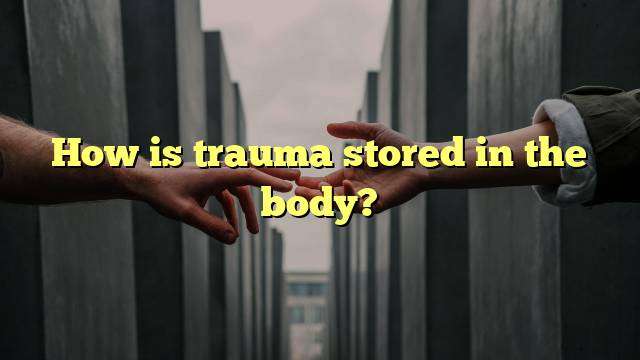Understanding the Impact of Trauma on the Body
Trauma has a profound effect on the body, impacting many aspects of physical and mental health. The concept of trauma is not new, but the ways in which it can manifest and be stored in the body are only now being explored. In this article, we will explore how trauma is stored in the body and the implications of this for the individuals who experience it.
What is Trauma?
Trauma is defined as an overwhelming experience that can be physical, emotional, or spiritual in nature. It is often associated with physical or emotional abuse, neglect, or a dangerous situation. The effects of trauma can range from feelings of fear and anxiety to physical symptoms such as headaches, stomachaches, and body aches.
How is Trauma Stored in the Body?
Trauma is stored in the body in two ways: the body’s memory and the biological stress response.
Body Memory
The body’s memory is a way of storing traumatic experiences in the body. It is believed that when a person experiences a traumatic event, the body stores the experience in the form of physical sensations. These sensations can range from tightness in the chest to muscle spasms.
Biological Stress Response
The biological stress response is the body’s way of responding to a traumatic experience. This response is a result of the body releasing stress hormones such as cortisol and adrenaline. These hormones can cause physical changes in the body, such as increased heart rate, rapid breathing, and tense muscles. These physical responses can be triggered by the memories of the traumatic event, even when the individual is not experiencing the event in the present.
What are the Implications of Trauma Storage?
The implications of trauma storage in the body are both physical and psychological. Physically, the body can become more vulnerable to illnesses and diseases, as stress hormones can weaken the body’s immune system. Psychologically, the individual may experience anxiety, depression, and post-traumatic stress disorder (PTSD).
How Can Trauma Storage be Addressed?
There are several ways to address trauma storage in the body. Many times, the individual will need to seek professional help in order to process the trauma and learn healthy coping mechanisms.
Counseling and Therapy
Counseling and therapy are important in helping individuals process the trauma they have experienced. This can involve talking through the traumatic experience and identifying and understanding the emotions that come with it. Counseling and therapy can also help individuals develop healthy coping mechanisms for dealing with the trauma and its effects.
Mindfulness
Mindfulness is a practice that involves being aware of one’s thoughts and feelings in the present moment. It can involve activities such as meditation, yoga, or breathing exercises. Mindfulness can help individuals manage their stress levels and become more aware of their triggers for feeling overwhelmed.
Movement
Movement is an important way to release the physical tension that can be stored in the body from trauma. This can involve activities such as yoga, tai chi, or dancing. Movement can help individuals become more aware of the physical sensations in their body and help them to release any tension that may be stored in their muscles.
Conclusion
Trauma is stored in the body in both body memory and the biological stress response. The implications of this can be both physical and psychological, and can manifest as physical ailments and mental health issues such as anxiety and depression. There are several ways to address trauma storage in the body, including counseling and therapy, mindfulness, and movement. It is important for individuals to seek professional help when needed in order to process their trauma and learn healthy coping strategies.



